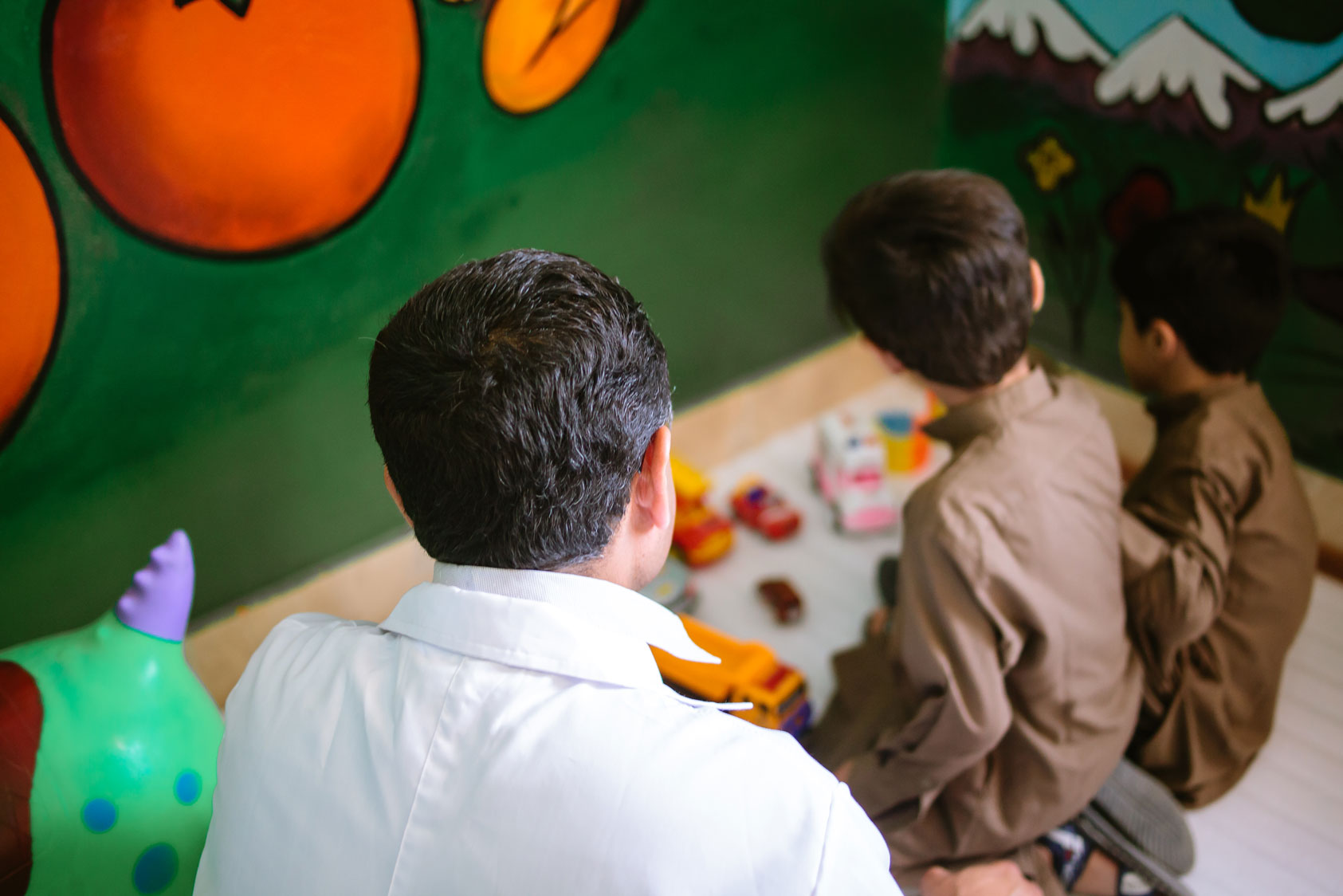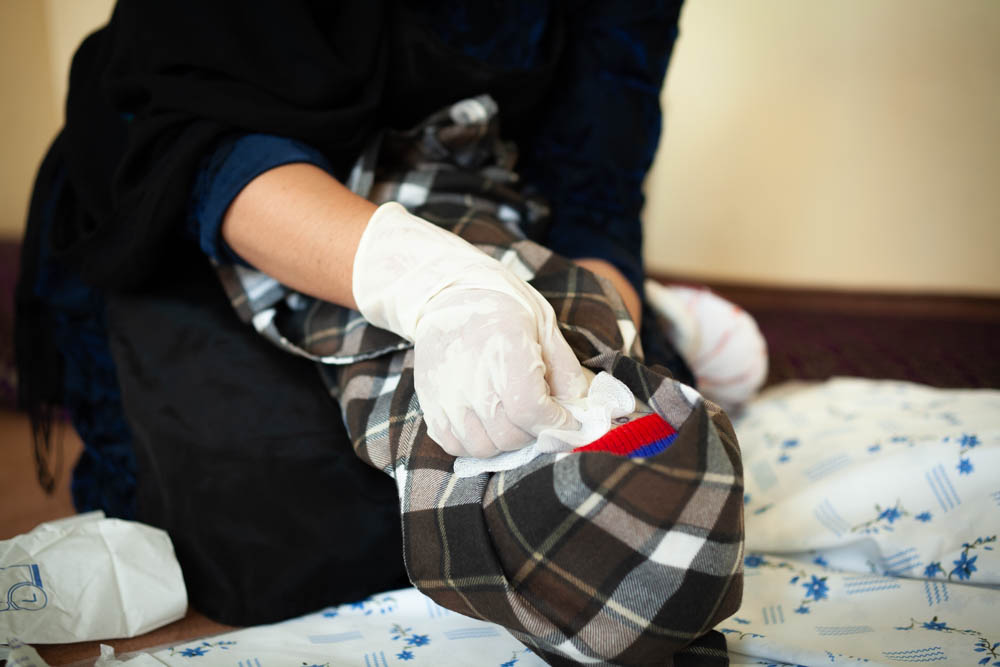Building resilience in staff
You don’t have to experience a traumatic event first-hand to experience its impacts in your daily life. People who work closely with those who have experienced trauma – for example, being close to an explosion, losing a family member to conflict, or being forced to flee their home – can internalise those experiences and actually begin to experience all the symptoms of that trauma as if they had lived it themselves. This is called secondary trauma, and it’s common amongst people who work for NGOs.
“What’s an organisation’s biggest asset? Its people…” says Beth*, a peacebuilding expert who visited Afghanistan to help the International Assistance Mission’s staff in August. “If IAM wasn’t in [Afghanistan], from my perspective, locals would feel that absence. And you can’t have a continued presence without healthy people.”
Beth’s focus is to help those who are working to build peace in demanding contexts, by training them in strategies to prevent burnout, build resilience, and overcome obstacles in their work. We asked Beth to come to IAM and help our local staff begin to understand more about what trauma is and to help them find practical ways to process their experiences and look after themselves, as they take care of those around them.
IAM partners with the Afghan people in order to bring hope and transformation in Afghanistan. And we love what we do. We are privileged to walk alongside partners and beneficiaries, and see lives changed as a result of our work. Walking with people to bring transformation means sharing their burdens as well as their joys. And because we love what we do, we recognise the importance of taking care of our own staff, who dedicate their working days to helping others.

IAM staff help children with mental illnesses
While secondary trauma has a very sudden onset – like a flashback, or another sudden symptom – it can easily develop into vicarious trauma. Like secondary trauma, “vicarious trauma is when you are absorbing all of the trauma of the experiences around you, even if they haven’t happened to you personally,” says Beth. But, unlike secondary trauma, vicarious trauma tends to have a gradual onset, resulting in a shifting worldview. “You start to question a lot of things that you didn’t question before, your spiritual beliefs can change, [and you may be asking] if God is good, why [do these things happen].” With so many people being affected or having family members or friends affected by traumatic experiences, it’s not surprising that Beth suspects many people in Afghanistan are suffering from vicarious trauma.

IAM staff perform eye surgeries
Beth took time to explain the different types of trauma to our staff, and then went on to explain how these traumas can compound into other issues. When people experiencing secondary or vicarious trauma are working to help others, like our staff at IAM, they may later experience compassion fatigue – where a person begins to feel indifferent and apathetic because they just don’t have any more in them to give – or burnout – when a person is so physically or emotionally exhausted, often due to work-related stress, that they can’t carry on. If our staff don’t know what these issues are, or even that they are experiencing trauma, it’s impossible for them to know how to prevent them and stay healthy.

IAM staff help mothers in remote mountain villages to keep their babies alive
“A natural response [is] to distance ourselves from pain and from trauma,” says Beth. But, while that is natural, “it keeps us from being whole beings. If I’m not in touch with my heart – my emotions, my feelings – that’s a huge part of not living life fully.”
Armed with definitions and a heightened awareness of different kinds of trauma and related issues, our staff entered into the subsequent days of training, where they learned about ways to prevent these issues and become more in touch with what is happening within them as they process trauma. They learned about managing emotions, how to bounce back after a hardship, and how to take care of themselves so they can continue helping others.
Looking forward
While much of the content was new for our staff team, Beth emphasised the willingness of many staff members to really engage with the material and think hard about their own wellbeing. Though this training merely laid the foundation for future work on staff wellbeing, Beth hopes to continue adding layers to the knowledge around resiliency that our staff have begun to grow in.
There is a plan to do more trainings, but the deeper work happens at a one-on-one level, as Beth works with a few select participants to help them implement their learning. “My hope is that there will be some personal follow-up and contact between now and the next training, so that when the next training comes, the ones who have been coached are really just right there,” Beth explains. Building awareness and practices around resiliency can take a long time, but Beth is hopeful that eventually, with “a core group within the organisation…[staff wellbeing] is something that can be done in-house.”
It’s common for international organisations to provide staff support to expatriate workers, but less to local staff, and IAM wants to ensure that all staff have access to the tools they need to take care of themselves while they take care of others, too. “I’m encouraged that IAM sees that that’s an issue and is taking action about it,” Beth remarks. “It’s a really good thing.”
There will be a number of subsequent trainings over the coming months and years, and a lot more follow-up before IAM can roll this out organisation-wide, but we recognise the importance of building up staff members in this way. We are glad to have someone like Beth to begin the process to build a more self-aware and resilient staff. In the long term, we believe this will lead to healthier workers doing even greater things. And that is a very worthwhile investment for us.
If you are experiencing secondary trauma
If you find yourself reading this article and thinking you might be experiencing secondary trauma, there are things you can do! The first step is educating yourself on secondary trauma and what the symptoms are – and thankfully, there are plenty of resources available.
“This is not a territory that you need an expert to walk alongside you. If you’re really interested, go online. There’s all kinds of videos online, on YouTube, about secondary trauma.” If you go online and recognise symptoms of secondary trauma in yourself, you can then check out techniques for mindfulness and relaxation to help you.
“There are all kinds of tools out there for how to get your body and your body’s responses normalised. And that will help with the symptoms of secondary trauma… so that life doesn’t feel so overwhelming all the time.” While it might seem like a small solution for a big problem, Beth says it’s a great place to start.
If you find your symptoms so overwhelming that you can’t function, Beth suggests seeing a doctor and considering medication in conjunction with other treatment, therapy, and exercises you do yourself.
Name changed
Want to hear about the great work the IAM staff team is doing? Check out our latest news stories!